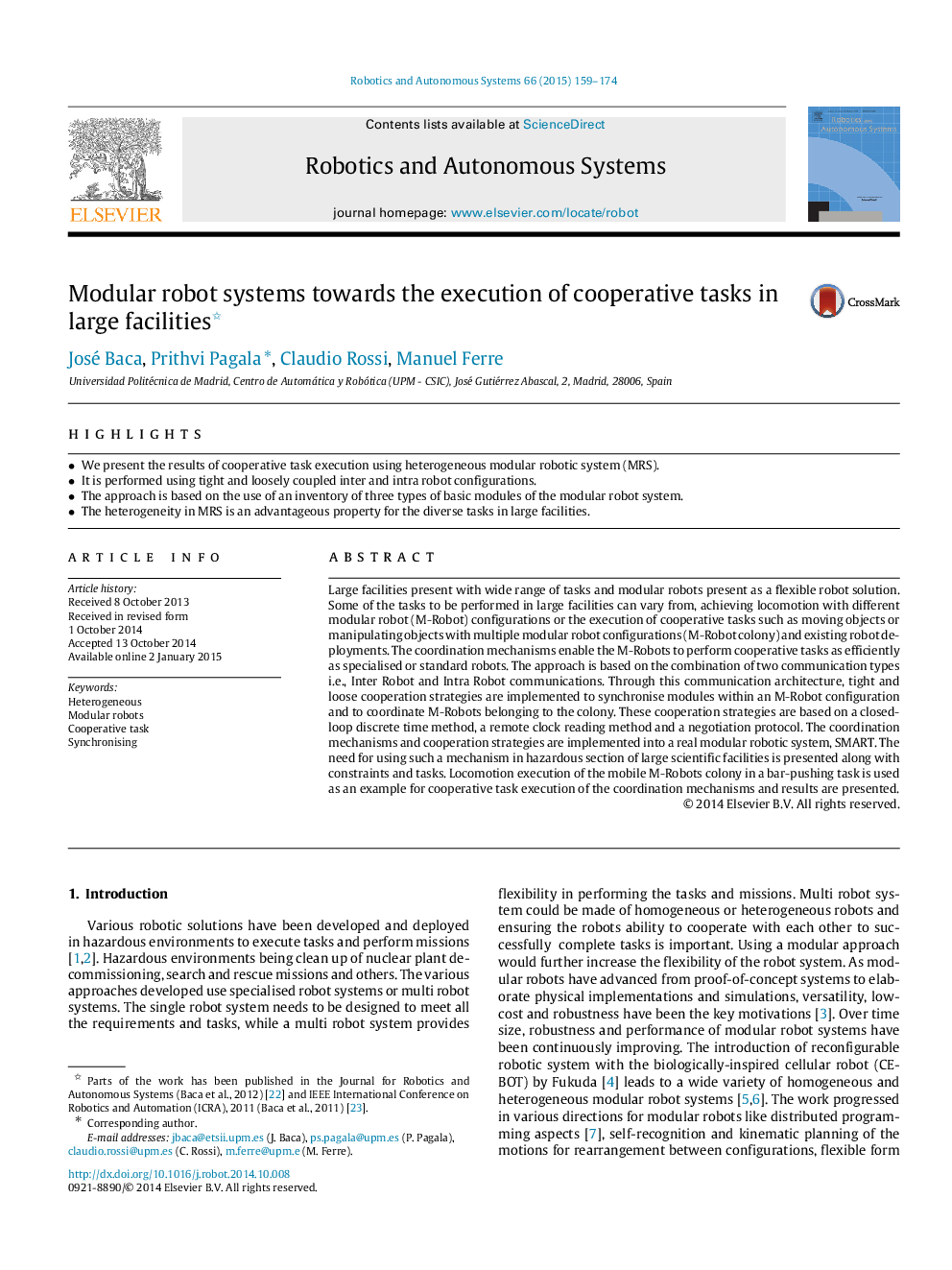| Article ID | Journal | Published Year | Pages | File Type |
|---|---|---|---|---|
| 6867662 | Robotics and Autonomous Systems | 2015 | 16 Pages |
Abstract
Large facilities present with wide range of tasks and modular robots present as a flexible robot solution. Some of the tasks to be performed in large facilities can vary from, achieving locomotion with different modular robot (M-Robot) configurations or the execution of cooperative tasks such as moving objects or manipulating objects with multiple modular robot configurations (M-Robot colony) and existing robot deployments. The coordination mechanisms enable the M-Robots to perform cooperative tasks as efficiently as specialised or standard robots. The approach is based on the combination of two communication types i.e., Inter Robot and Intra Robot communications. Through this communication architecture, tight and loose cooperation strategies are implemented to synchronise modules within an M-Robot configuration and to coordinate M-Robots belonging to the colony. These cooperation strategies are based on a closed-loop discrete time method, a remote clock reading method and a negotiation protocol. The coordination mechanisms and cooperation strategies are implemented into a real modular robotic system, SMART. The need for using such a mechanism in hazardous section of large scientific facilities is presented along with constraints and tasks. Locomotion execution of the mobile M-Robots colony in a bar-pushing task is used as an example for cooperative task execution of the coordination mechanisms and results are presented.
Keywords
Related Topics
Physical Sciences and Engineering
Computer Science
Artificial Intelligence
Authors
José Baca, Prithvi Pagala, Claudio Rossi, Manuel Ferre,
